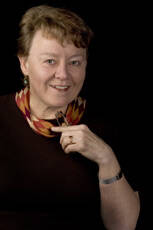For years I carried a tennis racket on vacations and played in some beautiful, memorable places—high on a mountainside in Bellagio, Italy, for instance, above the fork in Lake Como. These days, however, having taken up painting (or, more accurately, having been seized by painting), I pack paper, a pencil, an eraser and a travel set of watercolors (so small it fits into my hand) and spend hours in plein-air pursuits. Watercolors have accompanied me to Canada, Spain, Poland, Norway, Portugal and France. Yet the quality of the art I make might cause a fair-minded viewer to wonder why I bother. I’m no John Singer Sargent, no J. M. W. Turner, and no amount of practice will ever change that.
A rank amateur, I have found that studying portraiture and the human figure has not prepared me to paint cityscapes, seascapes or landscapes, though I thought it would and think it ought to, if only I were doing it correctly. When painting trees, skies, water and architecture, I’m tempted to dial 911 for emergency assistance.
Painting outside in public also has its challenges. In art class, no one ever walks between artist and subject, but outdoors people routinely linger in the narrow space between the artist and the statue or flowers or boat she has chosen to immortalize. In class, no one gawks from behind or comments on the work in progress. No dripping leaf, bird or sudden cloudburst mars the image one has spent hours making; no gale rips the sheet from one’s tablet. In class, other students sympathize with common errors—like the troubling blooms that form from an excess of water. Outdoors, though, these blooms call out to passersby: “Come here and look at this mistake!” As anyone who has ever painted in the medium knows, watercolors do not tolerate mistakes. Outdoors, the paintings seem to take them personally.
The plein-air painter must be prepared for sweat, sunburn, insects, wind and accidents involving permanent color. I have learned (almost) not to care what onlookers say and readily oblige anyone who asks to take my photo. And I love the children who, fascinated by the colors and the act of painting, stand reverently beside me until some adult calls them, still rapt, away. Mark-making binds people, even if they can’t say 10 words to each other in a common language.
Imagine me folded onto a six-inch curb in Krakow, painting a streetcar passing through a crowded intersection. Imagine me, fingers half-frozen, painting solo on a bench overtaken instantly by Japanese tourists, the day’s last busload, as night falls over a totem at a Canadian national monument. See me in Vancouver, straddling a felled tree on the beach trying to catch on a 10-inch by 14-inch page the spectacle of the setting sun. Imagine me painting vignettes of children as they swim and jump into Lake Annecy in the French Alps.
Why try if the paintings are not the reward? After all, one can effortlessly make a picture-perfect video or photo. My answer: Because effort is the thing; the joy is in the doing. It is fun to imagine oneself painting a lovely frameable keepsake, but the joy comes in the application of the paint. Also, I remember each subject, sitting before it, relating to it, giving it my best. While I am often proud of my paintings—enough to display them at home and at the office—it is the experience of painting that satisfies. I choose a subject, sketch it, experiment with colors and stroke with the brush. I love the grand absorption, oblivion for hours. Often I take too long. The light changes so much that my finished image shows the passage of time by its incongruous shadows. Yet looking intensely at a subject, examining how it is constructed, what lies in front of it, behind it, next to it, watching it change with the light—is a huge reward.








